The day had come to go to the Sundarbans and at last my fever had gone and I was feeling better. At 6.30am Shuvarthi Guta arrived with his driver and car to take us to Godkhali, the gateway to the Sundarbans.
The Sundarbans are a natural wilderness region at the top of the Bay of Bengal and spread over both India and Bangladesh
. It is the largest block of Halophytic Mangrove forrest in the world and the whole region covers a vast area of close to 10,000 square kilometres. Of this the Indian side is more accessible and accounts for 40% of the forest. It was also far less affected by the 2014 oil spill which occurred in the Bangladeshi side.
Whilst I had been in Ranthambhore in January, I had met Shuvarthi on one of the Safaris. He is from Bengal and is a professional photographer running tours within the Sundarbans National Park which I had been determined to visit since my arrival in India. The trip he had proposed was a high end trip (perfect for Dad) on a traditional large Sundarbans boat, with a cook, the captain and a deck hand. He was also including a professional birding guide and himself to help Dad with his camera. We settled on a two night, three day trip which we both felt would give a good over view of the Sundarbans. I also insisted that Dad would need air conditioning at night and therefore (as the boat had none) we would have to come back out of the National Park each night to the area around Godkhali for accommodation in a lodge. This was never a problem.
The trip down to Godkhali was a good three hours but unfortunately in the middle of Kolkata’s rush hour we struck a nail in the road and suffered a delay due to the resulting puncture
. Nevertheless we were on the boat at Godkhali just 60 minutes late and soon sailing into the Mangrove area.
However before we had to enter the National Park itself, we had to go first to the headquarters of the Sundarbans National Park which is located on Sajnekhali island. Here there is a watchtower complex, museum, an impressive mangrove interpretation centre, turtle farm and the head office where the entry fees are paid. It was worth stopping for the Interpretation centre alone which was informative and well displayed.
Back in the boat and we skirted along the islands opposite Gosaba island, one of the largest inhabited islands. These islands facing Gosaba were the perimeter islands of the National Park and each were noticeable for they were ringed with a high eight meter (I guessed) strong material (Nylon?) fence that had been erected just before their muddy beaches
. “A tiger fence” Shuvarthi acknowledged. “A tiger can swim across this narrow channel (“which was not narrow” I thought) in around five minutes. These tigers have developed a unique ability to swim in salty water. They are all interested in Gosaba (the opposite island) as there is lots of easy prey there, like dogs, cattle, goats and humans,” Shuvarthi said. The fence at times did look no more than cosmetic window dressing as it drooped over the Mangroves or across the entrance to a muddy creek. Rather like a high tennis net I thought and if I was a resident in Gosaba - I would not sleep easily at night. Once or twice I notice it was erected twice (doubled), but I could not help thinking how flimsy this was. The “tigers can get through by slashing the net with their claws” Shuvarthi also added, making my father feel somewhat insecure and grateful for a lodge bed each night.
The nets swung their way around these islands until the entrance to the National Park. Here they finished and we were left chugging up this waterway between two large mud flat islands. The National Park itself is a vast mosaic of these islands. They are impenetrable, dominated by thick and spiny Mangroves and covered with sinking soft grey mud. It was difficult to imagine that anything much could survive in these forests of spines, but the Mangrove areas support a vast array of animals and birds
. The most famous is of course the Bengal Tiger, whose reputation here is one of a ferocious killer. Only two days before had a local crab hunter been killed. Fisherman and crab hunters continue to ignore the risks and venture into the national park to make their living and these are mostly commonly the human victims. But I had full respect for the tiger for managing to eek out an existence in this seemingly inhospitable place. Just the heat and humidity were stifling.
There are well over 200 tigers in the Sundarbans but the chances of seeing one are slim. That was why we had been to Ranthambhore. We were actually interested in all the wildlife here particularly the birds and especially the huge diversity of kingfishers. In the Sundarbans one can spot the Common Kingfisher, the Pied Kingfisher, the Stork billed Kingfisher and the White Throated Kingfisher (all of which I had spotted and photographed before) but also there was a chance to see the Brown Winged Kingfisher, the Ruddy Kingfisher, the Black Capped Kingfisher and the Collared Kingfisher. Such was the diversity and concentration of the birdlife here that at the end of the three days, I had seen and photographed (albeit not well) the Collared and the Ruddy Kingfishers, despite being here in the wrong time of year.
In terms of animals there was a chance of seeing fishing cats, leopard cats, macaques, wild boar, the Indian grey mongoose, fox, jungle cat, flying fox, pangolins, estuarine crocodiles, spotted deer and others
. However the density of the vegetation would make this difficult, we knew. But spotting anything in this terrain would be interesting. As far as other birds were concerned, we were hoping to spot any of the following, including pheasant-tailed jacanas, pariah kites, brahminy kite, marsh harriers, swamp partridges, red junglefowl, spotted doves, common mynahs, jungle babblers, cotton teals, herring gulls, Caspian terns, gray herons, common snipes, wood sandpipers, green pigeons, rose ringed parakeets, paradise-flycatchers, cormorants, grey-headed fish eagles, white-bellied sea eagles, peregrine falcons, woodpeckers, whimbrels, black-tailed godwits, little stints, eastern knots, curlews and golden plovers. Actually we ended up seeing a good proportion of these including a magnificent and an equally impressive brahminy kite, which hung around at the boat at the very start of the trip.
Our boat was an excellent vessel with which to spot animals and birds
. It had two decks and was quite larger than I had imagined it would be. At the front its top deck were comfortable fold away chairs, a large reclining seat, a covering tarpaulin and plenty of room. The captain’s room housing the steering wheel sat in the middle of the top deck whilst the back part of the top floor was empty and open. Below were the sleeping quarters, toilet, engine room and a kitchen. All comfortable and easy for Dad to move about.
Food was prepared on board, to a high standard and in a surprisingly large quantity. It was delicious and it never ceased to surprise me how this could be achieved in this hot weather next to a very hot engine. Dad and I were on the front top deck most of the time. Here Shuvarthi and the guide kept watch. I have to say the birding guide (I forget his name) was very impressive spotting birds by their calls before directing the boat in close for the photographic opportunity.
We continued on chugging down the waterways spotting birds and occasionally animals
. The scenery was spectacular and completely unusual. Mangroves of many shapes and sizes clung to the mud. Some were seemingly standing on stilts on the mud, others had crazy roots spread out in every direction. Around each corner was something interesting or unusual and a couple of times we spotted fresh tiger prints in the soft mud. On the second day the tide came into the National Park . It was remarkable how far it came in swamping some islands and how quickly it arrived and then left. Of course when the tide retreated the mudbanks revealed themselves with all the animal prints deleted.
It was on the second morning that our big sighting occurred. We spotted a par of Small Clawed Otters frolicking in a muddy creek. These are rare animals and Shuvarthi had never spotted any in well over six years of visiting the Sundarbans. Not only were they a good spot, but the remained in the area right in front of us under the Mangroves enabling a long good photographic opportunity for everyone in the boat. They were tiny, well certainly compared to the giants I had seen in the Amazon. They both had a more ‘typical’ (well to me typical) otter face with beautiful long dangly whiskers. None of the big faces with those haunting huge eyes and almost human like hands that the Giant Otters of the Amazon possess. The were really quiet ‘loveable’.
We also photographed water monitors (some large), estuarine crocodiles, lesser adjacent storks, egrets, spotted deer, golden plovers, Macaques, a wild boar, curlews and local fisherman amongst others, but the otters were certainly the highlight
.
At the end of the second day we managed to get back to our accommodation before a huge storm hit, quite unexpectedly and quickly. I was just inside my room when the ferocious winds and rains hit and this went on for a good 90 mins. The next morning the lodge looked like it had been in a cyclone. The gardens were damaged, trees over etc etc and my attention turned quickly to Shuvarthi and his crew who were sleeping on board the boat. As it turned out they were OK, but they had experienced a terrible night as they could not get to the safety of one of the creeks in time and had to weather the storm out in the main channel. Only damage was the loss of the tarpaulin roof, but compared to what I saw others had suffered this was minor.
That morning we spotted the kingfishers and a huge crocodile before having to leave the Sundarbans. Shuvarthi ensured we were delivered back to Kolkata and all in all this was an excellent, professional three day trip in an outstanding and unique area
. Dad was now glad of a rest.
Mud, Mangroves, Kingfishers, Boats, Storms, Otters
Wednesday, April 22, 2015
 Sundarbans National Park, West Bengal, India
Sundarbans National Park, West Bengal, India
Other Entries
-
105Sumos, Boulders, Oranges, Idu Mishmi
Feb 1764 days prior Roing, Indiaphoto_camera5videocam 0comment 0
Roing, Indiaphoto_camera5videocam 0comment 0 -
106Motorbikes, Idu Mishmi, Hats, Illness, Scenary
Feb 1962 days prior Anini, Indiaphoto_camera9videocam 0comment 0
Anini, Indiaphoto_camera9videocam 0comment 0 -
107Nyokum Yullo, Nishi people, ferries, chain dance
Feb 2259 days prior Itanagar, Indiaphoto_camera5videocam 0comment 0
Itanagar, Indiaphoto_camera5videocam 0comment 0 -
108Paddies, Plugs, Tattoos, Weddings, Bamboo, Spirits
Feb 2457 days prior Ziro, Indiaphoto_camera5videocam 0comment 0
Ziro, Indiaphoto_camera5videocam 0comment 0 -
109Post Office, Hari's Help, Tourist Apartheid
Mar 0152 days prior Guwahati, Indiaphoto_camera3videocam 0comment 0
Guwahati, Indiaphoto_camera3videocam 0comment 0 -
110Hornbills, Eco Lodge, Birds, Elephants & Nameri NP
Mar 0350 days prior Tezpur, Indiaphoto_camera5videocam 0comment 0
Tezpur, Indiaphoto_camera5videocam 0comment 0 -
111Plans Changing, Bus tyres, early closing museums
Mar 0845 days prior Kohima, Indiaphoto_camera2videocam 0comment 0
Kohima, Indiaphoto_camera2videocam 0comment 0 -
112Wildlife, History, Bad Roads, Elephants & Dust
Mar 1340 days prior Wokha, Indiaphoto_camera5videocam 0comment 0
Wokha, Indiaphoto_camera5videocam 0comment 0 -
113Wedding, More Dust, Shawls, Tensions and Sumi Food
Mar 2033 days prior Zunheboto, Indiaphoto_camera3videocam 0comment 0
Zunheboto, Indiaphoto_camera3videocam 0comment 0 -
114Stones, Inventions, Old Friends and Shop 65
Mar 2429 days prior Mokokchung, Indiaphoto_camera5videocam 0comment 0
Mokokchung, Indiaphoto_camera5videocam 0comment 0 -
115Meeting Mr Sosangtemba Longkumer Ao
Mar 2627 days prior Longsa, Indiaphoto_camera4videocam 0comment 0
Longsa, Indiaphoto_camera4videocam 0comment 0 -
116Expensive Transport, Rain, Football, Cockroaches
Mar 2825 days prior Longleng Nagaland, Indiaphoto_camera3videocam 0comment 0
Longleng Nagaland, Indiaphoto_camera3videocam 0comment 0 -
117Pork, Pigs, Moon Singing, Monsoon, Footy
Apr 0121 days prior Wakching, Indiaphoto_camera10videocam 0comment 0
Wakching, Indiaphoto_camera10videocam 0comment 0 -
118Aoling Festival, Rain, Easter, Rain, Rain
Apr 0616 days prior Wakching, Indiaphoto_camera10videocam 0comment 0
Wakching, Indiaphoto_camera10videocam 0comment 0 -
119The Not Super Travel Co, Tea, Temples & Bye Byes
Apr 1012 days prior Kamakhya, Indiaphoto_camera5videocam 0comment 0
Kamakhya, Indiaphoto_camera5videocam 0comment 0 -
12035c, Haveli, Pink City, Amber Fort, Tigers, Tigers
Apr 157 days prior Sawai Madhopur, Indiaphoto_camera5videocam 0comment 0
Sawai Madhopur, Indiaphoto_camera5videocam 0comment 0 -
121Taj, Baby Taj, carpets, arguments, fever plus 43c
Apr 184 days prior Agra, Indiaphoto_camera5videocam 0comment 0
Agra, Indiaphoto_camera5videocam 0comment 0 -
122Mud, Mangroves, Kingfishers, Boats, Storms, Otters
Apr 22 Sundarbans National Park, Indiaphoto_camera10videocam 0comment 0
Sundarbans National Park, Indiaphoto_camera10videocam 0comment 0 -
123Last Days in Kolkata, Obsolete Passports, Thailand
May 019 days later Koh Chang, Thailandphoto_camera10videocam 0comment 0
Koh Chang, Thailandphoto_camera10videocam 0comment 0 -
124Getting home, reflections and thoughts
May 1321 days later Bristol, United Kingdomphoto_camera3videocam 0comment 3
Bristol, United Kingdomphoto_camera3videocam 0comment 3

 Sundarbans National Park, West Bengal, India
Sundarbans National Park, West Bengal, India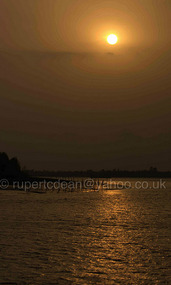
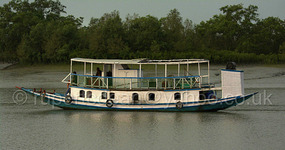
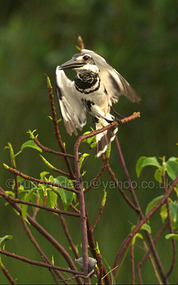
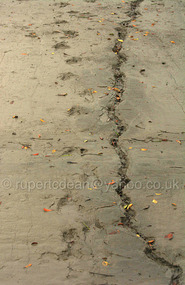
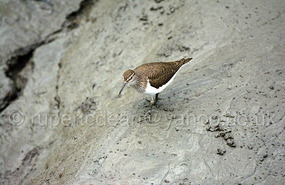
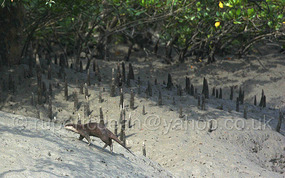
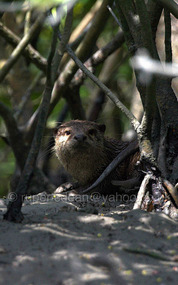
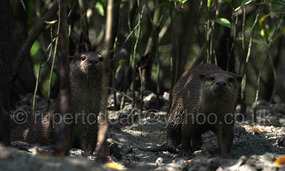





2025-05-22